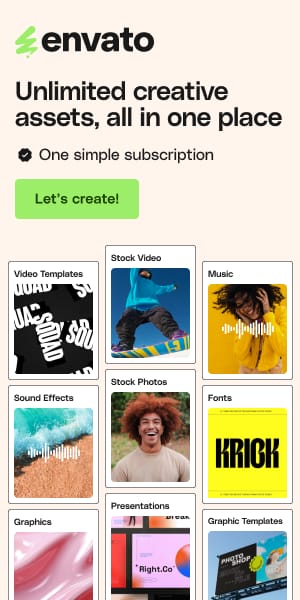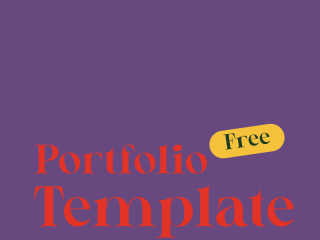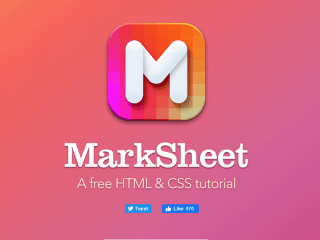20 Best Free CSS Grid Generators and Frameworks That’ll Transform Your Layout Workflow in 2025
Tired of wrestling with grid-template-columns and grid-template-areas while your deadline approaches? You’re about to discover 20 game-changing tools that eliminate CSS Grid headaches forever.
This curated list includes visual drag-and-drop generators for rapid prototyping, production-ready frameworks for scalable projects, and hybrid solutions that bridge both worlds. Each tool has been tested in real projects and ranked by ease of use, features, and output quality.
What you’ll get from each tool:
✅ Difficulty level (Beginner/Intermediate/Advanced)
✅ Best use cases with specific examples
✅ Pros and cons based on real-world testing
✅ Pro tips to maximize each tool’s potential
See also
Quick Reference: Find Your Perfect Tool
| Need | Best Tools | Skill Level |
| Visual prototyping | #1 Griddy, #3 Layoutit Grid | Beginner |
| Learning CSS Grid | #3 Layoutit Grid, #5 Sarah Drasner | Beginner |
| React/Vue projects | #4 Vue Generator, #12 Tailwind | Intermediate |
| WordPress sites | #2 Elementor, #11 Bootstrap | Beginner |
| Performance-critical | #17 Pure.css, #19 Skeleton | Intermediate |
CSS Grid Generators: Visual Tools for Instant Layouts
Griddy – The Visual Grid Builder That Actually Works

Difficulty : Beginner
Best for : Rapid prototyping, responsive design, client presentations
What makes it special : Clean sidebar interface with real-time responsive previews. No CSS knowledge required.
Key Features :
- Drag-and-drop row/column controls
- Built-in responsive breakpoints (mobile, tablet, desktop)
- Gap controls with pixel precision
- One-click CSS export
Pros : Beginner-friendly | Responsive-first design | Clean CSS output
Cons : Limited advanced features | No HTML generation
Pro Tip : Start with Griddy’s template gallery for common layouts like hero sections or product grids. Perfect for client approval before coding.
CSS Grid Generator (Elementor) – WordPress Developer’s Dream

Difficulty: Beginner
Best for: WordPress themes, CMS integration, content-driven layouts
What makes it special : Purpose-built for WordPress workflows with theme-friendly CSS output.
Key Features:
- Visual grid-area assignment
- WordPress-compatible selectors
- Content-aware sizing options
- Theme integration tested
Pros : CMS-optimized | Clean semantic HTML | WordPress-friendly
Cons : Basic feature set | Limited customization
Pro Tip : Use for custom post type archives and portfolio layouts. The generated CSS drops into theme files without conflicts.
Layoutit Grid – The CSS Grid Learning Machine

Difficulty: Intermediate
Best for : Learning CSS Grid, complex dashboards, team collaboration
What makes it special : Educational approach that teaches CSS Grid concepts while you build.
Key Features:
- Interactive
grid-template-areasvisualization - Nested grid support for complex layouts
- Real-time CSS code updates
- Direct CodePen export for sharing
Pros : Educational value | Handles complex layouts | Great documentation
Cons: Can overwhelm beginners | Steeper learning curve
Pro Tip : Use the CodePen export to create interactive prototypes for stakeholder feedback. Perfect for design system documentation.
Real Example : Build a dashboard with header, sidebar, main content, and chart areas:
css
grid-template-areas:
"header header header"
"sidebar main charts"
"sidebar main charts";
CSS Grid Layout Generator (Vue) – Framework Integration Champion

Difficulty: Intermediate
Best for: React/Vue projects, component libraries, design systems
What makes it special : Multi-format exports (CSS, JSX, styled-components) for modern development stacks.
Key Features:
- JSX and styled-components output
- Component-ready code structure
- Framework-specific naming conventions
- Advanced grid property controls
Pros : Multiple export formats | Component-ready | Modern dev workflow
Cons : Less visual than drag-and-drop | Configuration-heavy
Pro Tip : Generate baseline Grid components for your design system, then extend with project-specific variants.
CSS Grid Generator by Sarah Drasner – Classic Simplicity

Difficulty: Beginner
Best for : Quick mockups, learning basics, simple layouts
What makes it special : Zero-fluff interface from a CSS Grid expert. Gets you from idea to code in 60 seconds.
Key Features:
- Minimal drag-and-drop interface
- Instant CSS output
- No overwhelming options
- Trusted by thousands of developers
Pros : Extremely fast | No learning curve | Reliable output
Cons : Basic features only | No responsive controls
Pro Tip: Perfect for creating initial layout concepts. Use this for the “napkin sketch” phase, then refine with more advanced tools.
Angrytools CSS Grid Layout Generator -Power User’s Paradise

Difficulty : Advanced
Best for : Complex layouts, production code, precise control
What makes it special : Granular control over every CSS Grid property with transparent code generation.
Key Features:
- Complete grid property controls
- Explicit media query generation
- Implicit grid handling
- Advanced positioning options
Pro : Maximum control | Transparent output | Production-ready code
Con : Complex interface | Overwhelms beginners
Pro Tip : Use implicit grid settings for dynamic CMS content that may vary in quantity.
Grid It – Stakeholder Communication Tool

Difficulty: Beginner
Best for : Wireframing, client meetings, concept alignment
What makes it special : Ultra-simple visual tool designed for non-technical collaboration.
Pros : Zero learning curve | Great for wireframes | Client-friendly
Cons : Not for production | Limited features
Pro Tip : Use in early project phases to align stakeholders on layout concepts before development begins
CSS Grid Layout Generator (.pw) – Quick Grid Scaffolding

Difficulty : Beginner
Best for : Basic grids, quick scaffolding, simple layouts
What makes it special : No-frills approach to creating basic grid structures instan
Pros : Extremely quick | Simple interface | Fast results
Cons : Very basic | No responsive features
Pro Tip : Generate basic grid shell, then manually add grid-template-areas for better code readability.
Gridle – Accessibility-First Grid Builder

Difficulty : Intermediate
Best for : Accessible layouts, semantic HTML, inclusive design
What makes it special : Emphasizes semantic markup alongside visual grid design.
Pros : Accessibility focus | Semantic HTML | Clean code structure
Cons: Requires HTML knowledge | Learning curve
Pro Tip : Design mobile-first to ensure logical content order for screen readers across all breakpoints.
CSS Layout Generator (Brad Woods) – Hybrid Layout Master

Difficulty : Advanced
Best for : Complex app layouts, mixing Grid + Flexbox, advanced designs
What makes it special : Supports Grid, Flexbox, and hybrid approaches for real-world complexity.
Pros : Extremely flexible | Hybrid layouts | Deep customization
Cons : Complex interface | Requires layout knowledge
Pro Tip : Perfect for application shells: use Flexbox for navigation, Grid for main content areas.
CSS Grid Generator

CSS Frameworks: Production-Ready Layout Systems
Bootstrap – The Reliable Workhorse

Difficulty : Intermediate
Best for : Team projects, rapid development, component-rich sites
What makes it special : Most popular framework with a massive ecosystem and proven Grid system.
Pros: Huge community | Extensive components | Battle-tested
Cons: Larger file size | Opinionated styling
Pro Tip : Mix Bootstrap components with custom CSS Grid for unique layouts that maintain system consistency.
Tailwind CSS – Utility-First Precision

Difficulty : Intermediate
Best for : Custom designs, performance-conscious projects, modern workflows
What makes it special : Atomic utility classes with powerful purging for minimal CSS output.
Pros : Highly customizable | Small final size | Modern approach
Cons : Utility class learning curve | Verbose HTML
Pro Tip : Use @apply directive to extract common grid patterns into reusable component classes.
Bulma – Modern Flexbox Foundation

Difficulty: Beginner-Intermediate
Best for : Modern designs, modular architecture, Sass customization
What makes it special : Clean, modern syntax built on Flexbox with excellent CSS Grid integration.
Pros : Clean syntax | Modular imports | Easy Sass customization
Cons : Smaller ecosystem than Bootstrap
Pro Tip : Import only needed modules (grid, forms) to keep bundle size minimal while maintaining design consistency.
Foundation – Enterprise Grid Powerhouse

Difficulty : Advanced
Best for : Complex applications, enterprise projects, advanced grid needs
What makes it special : XY Grid system offers unprecedented control over complex layouts.
Pros : Extremely powerful | Enterprise-grade | Accessibility-focused
Cons : Steep learning curve | Complex for simple projects
Pro Tip : Master the XY Grid for data-heavy applications where standard grids fall short.
Semantic UI – Human-Readable CSS

Difficulty : Beginner
Best for : Team collaboration, readable code, design system documentation
What makes it special : Class names read like English, improving team communication.
Pros : Self-documenting code | Team-friendly | Intuitive naming
Cons : Larger file sizes | Verbose class names
Pro Tip : Excellent for design system documentation where stakeholders need to understand markup.
Materialize CSS – Google’s Design Language

Difficulty : Beginner-Intermediate
Best for : Android-style apps, data dashboards, Material Design projects
What makes it special : Implements Google’s Material Design with consistent spacing and hierarchy.
Pros : Consistent design language | Rich components | Mobile-first
Cons : Opinionated aesthetics | Google-specific styling
Pro Tip: Perfect for admin dashboards where Material Design’s information hierarchy enhances usability.
Pure.css – Minimalist Performance

Difficulty : Intermediate
Best for : Performance-critical sites, minimal projects, custom design systems
What makes it special : Complete responsive grid in just 3.7KB with excellent browser support.
Pros : Tiny size | Excellent performance | Unopinionated styling
Cons : Minimal components | Requires custom styling
Pro Tip : Perfect foundation for custom design systems where performance budgets are critical.
UIkit – Animation-Rich Layouts

Difficulty : Intermediate
Best for : Interactive sites, smooth animations, brand-focused projects
What makes it special : Advanced grid features with built-in animation utilities for polished UX.
Pros : Animation-ready | Flexible grids | Modular architecture
Cons : Smaller community | Learning curve for animations
Pro Tip : Combine UIkit’s grid utilities with its animation components for breakpoint transitions that feel intentional.
Skeleton – Rapid MVP Framework

Difficulty : Beginner
Best for : Quick prototypes, landing pages, minimal projects
What makes it special : Dead-simple responsive boilerplate perfect for MVPs and simple sites.
Pros : Extremely lightweight | Simple to customize | Fast setup
Cons : Very basic features | Limited components
Pro Tip : Ideal for landing pages and portfolio sites where custom styling matters more than component libraries.
Tachyons – Functional CSS Pioneer

Difficulty : Intermediate-Advanced
Best for : Systematic design, performance optimization, atomic CSS workflows
What makes it special : Original utility-first framework with terse, memorable class names.
Pros : Systematic approach | Fast development | Performance-focused
Cons : Terse naming | Requires discipline
Pro Tip : Create team conventions early to prevent utility class chaos in larger applications.
Quick Decision Matrix: Which Tool Should You Choose?
For Beginners:
- Visual prototyping: #1 Griddy → #3 Layoutit Grid
- WordPress sites: #2 Elementor → #11 Bootstrap
- Simple frameworks: #19 Skeleton → #13 Bulma
For Intermediate Developers:
- Modern workflows: #4 Vue Generator → #12 Tailwind CSS
- Custom projects: #12 Tailwind → #17 Pure.css
- Learning path: #3 Layoutit Grid → #6 Angrytools
For Advanced Users:
- Complex layouts: #10 Brad Woods → #14 Foundation
- Performance-critical: #17 Pure.css → #20 Tachyons
- Enterprise projects: #14 Foundation → #6 Angrytools
Action Steps: Start Building Better Grids Today
- Bookmark 3 tools from different categories for your toolkit
- Test drive Griddy for your next client presentation
- Try Layoutit Grid to level up your CSS Grid knowledge
- Experiment with Tailwind if you haven’t already
- Share this list with your team to standardize your workflow
The CSS Grid revolution is here, and these 20 tools ensure you’re ready to build faster, cleaner, and more responsive layouts than ever before.







